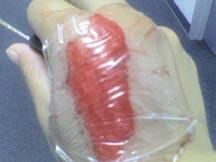
3 minute read
Moment of Inattention
from MECH Fall 2007
and took me to the emergency room at the base clinic where flight surgeons took over. Three days later, I was on limited duty and scheduled to be medically up within six weeks.
The lesson to be learned here is that what works at home may not always work on deployment. The different environment gave us several new safety factors to consider: a graded surface, a narrow ramp, and loose gravel everywhere. Everyone involved also learned a powerful lesson: Preservation of equipment is never more important than preservation of life or limb. By By AD3 Claudia Martinez
Advertisement
We were coming to the end of our SFARP detachment at NAS Fallon, Nevada. The detachment had gone well, and we had not experienced any major problems. But that situation was all about to change.
Tophatter 204 came back with oil leaking from around the engine-bay doors. Following shutdown, we opened door 64L, which is where the leak seemed to be coming from. When we inspected the engine bay, we found no obvious source of the leak. After discussing the problem with maintenance control, we decided to do a low-power turn to isolate the leak.
We briefed maintenance control, the plane captain, and shop personnel that would be involved with the turn. During the brief, we discussed the procedures that would take place during the turn. It seemed like any other leak check we had performed countless times before. Once the engine was turning, we began to look around the oil tank and the accessory gearbox—two obvious spots. We decided that it would be a good idea to wipe off the excess oil so it would be easier to find the leak. I began with the B-sump vent tube. I thought everything was going fine, but that’s when everything went terribly wrong.
The power transmission shaft (PTS), which turns at 30,000 rpm, was roughly 5 to 6 inches from the vent tube. I knew the PTS was there but decided that I had enough room to do my job. However, I misjudged the distance, and the cheesecloth I was using to wipe down the vent tube got caught in the PTS. My right hand viotraining Sailors to incorporate the ORM process into daily operations, we equip them with the tools to face any situation with the assurance that their decisions contribute to a safe and mission-effective environment.
In hindsight, all foreseeable safety hazards were considered. It was the unforeseeable hazards that our new operating environment provided that were not. After assessing this incident, the squadron now is using chock walkers when moving GSE, as well as using the tow tractor whenever possible.
Airman Vanberg works in the line division at VP-8. lently was yanked up and pulled toward the spinning PTS. As the cheesecloth was grabbed, it shredded, throwing white cloth everywhere. As soon as the plane captain noticed that something was wrong, he gave the signal to shutdown the engine. It was shut down immediately, and I began to pick up the pieces of cloth, not even realizing that there were a couple of layers of skin missing off my right hand. After a couple of moments, I looked at my hand and noticed the blood.
A couple shipmates took me to the emergency room to get my hand looked at. The doc took some X-rays, and it turned out that nothing was broken. The de-gloved portion of my hand was cleaned and bandaged, and I was sent home with a 72-hour limited-light duty chit.
My hand is healing and everything looks good except for the scar that I always will have. It will remind me of that day. From this experience I learned that we must be more aware of our surroundings and that no matter how routine or easy a job may appear to be, attention to detail is always a part of the process. I never will forget that the jobs we do everyday have the potential to injure or kill in a split second.
Petty Officer Martinez works in the power plants work center at VFA-14.










